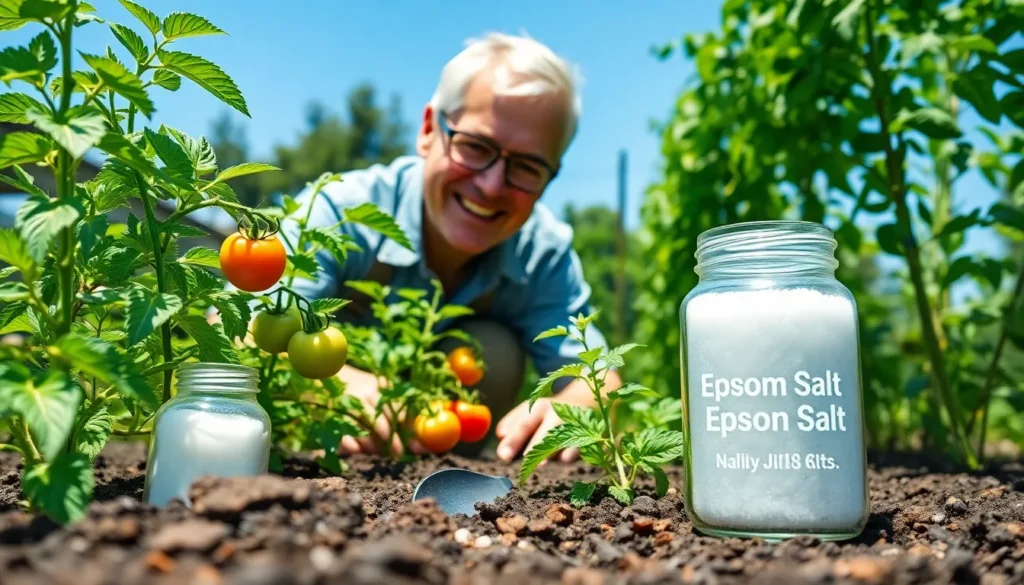We’ve all heard whispers about the magical powers of Epsom salt in gardens but many of us remain skeptical about this humble bathroom staple. Could something so simple really transform our struggling plants into thriving green beauties? The answer might surprise you.
Epsom salt isn’t just another gardening fad – it’s a scientifically-backed solution that’s been quietly revolutionizing home gardens for decades. This crystalline wonder contains magnesium sulfate which plants absolutely crave for healthy growth photosynthesis and vibrant blooms. From yellowing leaves to lackluster tomatoes we’ve discovered that many common plant problems stem from magnesium deficiency.
What makes Epsom salt particularly exciting is its versatility and affordability. Whether you’re nurturing houseplants battling garden pests or trying to boost your vegetable harvest this simple compound offers answers that expensive fertilizers often can’t match. We’re about to reveal exactly how to harness its power for spectacular results.
Understanding Epsom Salt and Its Chemical Composition for Plant Health
We’ll explore the fundamental differences between Epsom salt and regular table salt, plus how its unique mineral composition directly benefits plant development.
What Makes Epsom Salt Different From Table Salt
Epsom salt contains magnesium sulfate heptahydrate (MgSO₄·7H₂O), while table salt consists of sodium chloride (NaCl). The chemical structure creates completely different effects on plant systems. Sodium from table salt can actually damage plants by disrupting their cellular water balance and causing root burn.
Magnesium sulfate dissolves readily in water and releases two essential plant nutrients simultaneously. Table salt becomes toxic to most plants at concentrations that gardeners might accidentally apply. We can safely use Epsom salt at much higher concentrations without risking plant damage.
The molecular weight differs significantly between these compounds. Epsom salt weighs 246.47 grams per mole, containing approximately 9.8% magnesium and 13% sulfur by weight. This composition provides plants with bioavailable nutrients rather than harmful sodium buildup.
The Role of Magnesium and Sulfur in Plant Growth
Magnesium serves as the central atom in chlorophyll molecules, making it essential for photosynthesis and green leaf color. Plants deficient in magnesium display yellowing between leaf veins while the veins themselves remain green. This interveinal chlorosis typically appears first on older leaves since plants translocate magnesium to newer growth.
Sulfur functions as a building block for amino acids, proteins, and essential oils in plants. It activates enzyme systems that regulate nitrogen metabolism and oil production. Plants use sulfur to synthesize cysteine and methionine, two amino acids critical for protein formation.
The combination of magnesium and sulfur in Epsom salt creates synergistic effects for plant metabolism. Magnesium helps plants absorb other nutrients more effectively, particularly phosphorus and potassium. Sulfur enhances the uptake and utilization of nitrogen, leading to improved protein synthesis and overall plant vigor.
Research shows that adequate magnesium levels increase fruit and seed production in tomatoes, peppers, and roses. Sulfur deficiency symptoms include pale green or yellow leaves, stunted growth, and reduced flowering. These nutrients work together to support cellular energy production and stress resistance in plants.
Identifying Plants That Benefit Most From Epsom Salt Applications
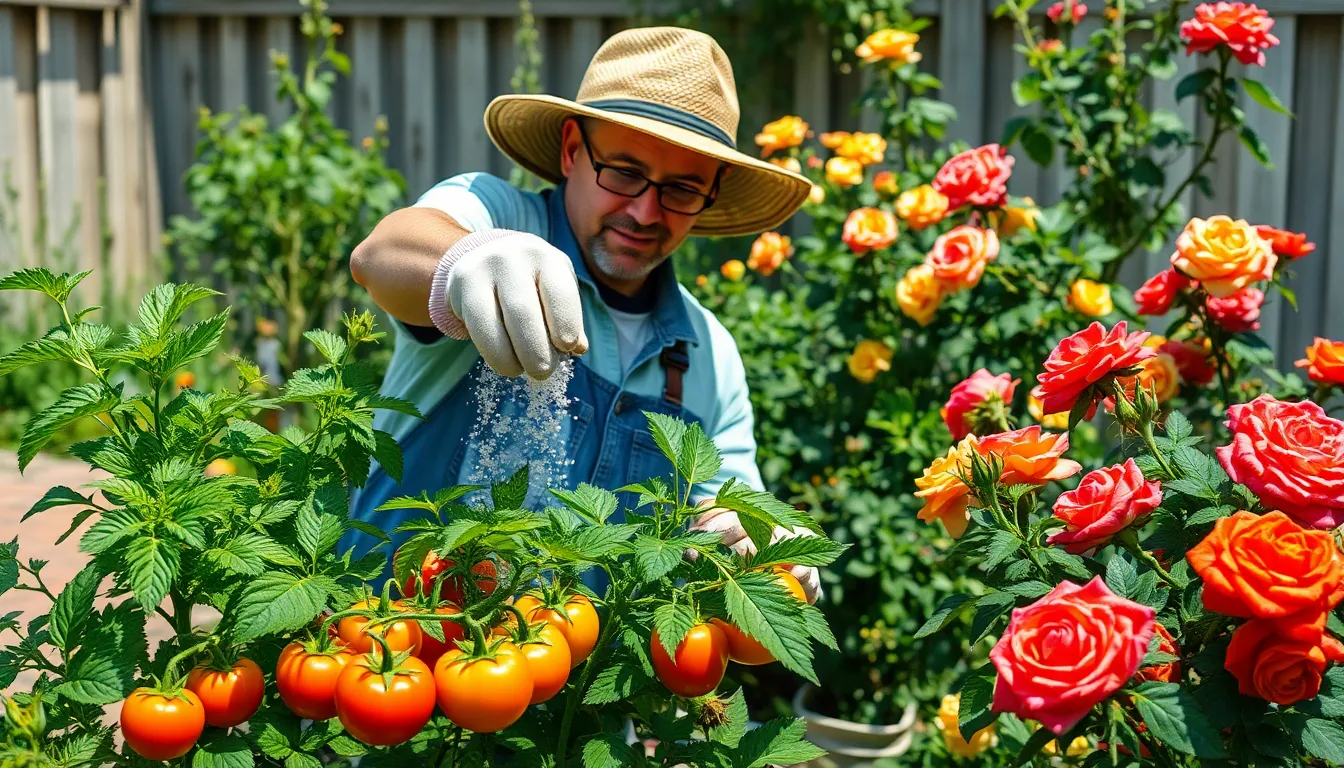
We’ll focus on exact plants that show the greatest response to Epsom salt applications when magnesium deficiency is present.
Tomatoes and Pepper Plants
Tomatoes and peppers demonstrate noticeable improvement when we apply Epsom salt to address confirmed magnesium deficiencies. Magnesium deficiency impairs nutrient uptake in these plants, but Epsom salt applications only provide benefits when soil testing confirms low magnesium levels.
We must avoid using Epsom salt to prevent blossom end rot, as this condition stems from calcium deficiency rather than magnesium shortage. Excessive Epsom salt can hinder calcium absorption, potentially worsening blossom end rot problems in tomatoes and peppers.
Applications work best when we’ve identified yellowing between leaf veins or poor fruit development. Sufficient soil magnesium means Epsom salt provides no benefit and may cause harm to these nightshade family plants.
Rose Bushes and Flowering Shrubs
Rose bushes respond positively to Epsom salt when they exhibit magnesium deficiency symptoms like leaf chlorosis. Yellowing between leaf veins indicates magnesium shortage in roses and other flowering shrubs.
We’ve observed that proper magnesium levels promote lush foliage and vibrant blooms in roses. Epsom salt enhances growth and color in roses by supporting their ability to develop strong stems and maintain flower production.
Flowering shrubs benefit from improved nutrient uptake when we address magnesium deficiencies through targeted Epsom salt applications. Strong stems support better flower displays when magnesium levels reach optimal ranges.
Houseplants Showing Magnesium Deficiency Signs
Houseplants presenting yellowing leaves or stunted growth may benefit from Epsom salt if magnesium deficiency causes these symptoms. Magnesium deficiency stresses plants and reduces their ability to use other essential nutrients like nitrogen and phosphorus.
We can improve overall nutrient uptake and plant vigor by addressing confirmed magnesium shortages in indoor plants. Poor growth often indicates nutrient uptake problems that Epsom salt can resolve when magnesium is the limiting factor.
Applications should target houseplants showing exact deficiency symptoms rather than healthy plants. Addressing deficiencies improves plant vigor and restores normal growth patterns in affected houseplants.
Recognizing Magnesium Deficiency Symptoms in Your Garden
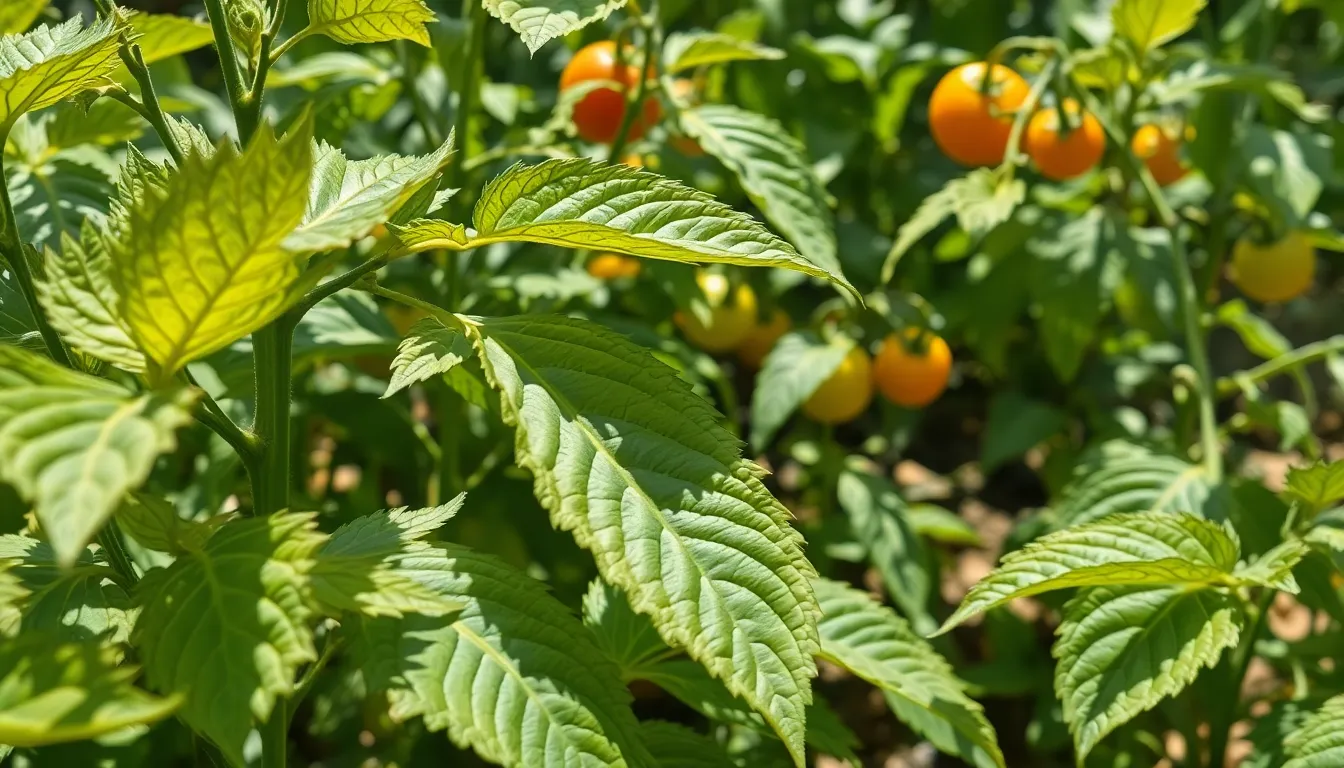
Spotting magnesium deficiency early can save your plants from serious health issues. We’ll help you identify the telltale signs that indicate when your garden needs Epsom salt intervention.
Yellowing Leaves Between Green Veins
Interveinal chlorosis appears as the most distinctive symptom of magnesium deficiency in our gardens. Older leaves display yellow tissue between their veins while the veins themselves remain bright green, creating a striking striped pattern that’s unmistakable once you know what to look for.
Chlorophyll production depends entirely on magnesium, which sits at the center of every chlorophyll molecule. Plants experiencing this deficiency can’t maintain their green pigment between leaf veins, causing the characteristic yellowing pattern that spreads from older leaves to newer growth as the condition worsens.
Photosynthesis efficiency drops significantly when this symptom appears, as the yellowed areas lose their ability to convert sunlight into energy. We’ve observed that tomatoes and peppers show this pattern most clearly, making them excellent indicator plants for magnesium levels in our soil.
Stunted Growth and Poor Fruit Development
Reduced photosynthesis directly impacts plant growth rates when magnesium deficiency takes hold. Plants struggle to produce enough energy for normal development, resulting in noticeably smaller leaves, shorter stems, and overall diminished plant size compared to healthy specimens.
Fruit quality suffers dramatically as magnesium deficient plants redirect their limited energy toward basic survival rather than reproduction. We see smaller tomatoes, fewer peppers per plant, and reduced yields across all fruit bearing varieties when this nutrient becomes scarce.
Flowering patterns become irregular or cease entirely in severely deficient plants. Rose bushes produce fewer blooms, vegetable plants delay fruit set, and flowering shrubs may skip entire blooming seasons when magnesium levels drop too low.
Leaf Drop and Overall Plant Weakness
Premature leaf drop occurs as plants sacrifice older leaves to concentrate remaining nutrients in newer growth. We notice this symptom particularly in houseplants and container gardens where nutrient depletion happens more rapidly than in ground plantings.
Advanced deficiency symptoms include leaf curling, tissue death along leaf edges, and purple discoloration in tomato plants. These severe signs indicate that immediate Epsom salt application is necessary to prevent permanent plant damage or death.
Plant vigor declines noticeably as magnesium deficiency progresses, with affected plants becoming more susceptible to pests and diseases. Weakened plants can’t maintain their natural defense systems, making them easy targets for common garden problems that healthy plants typically resist.
Applying Epsom Salt Correctly to Different Types of Plants
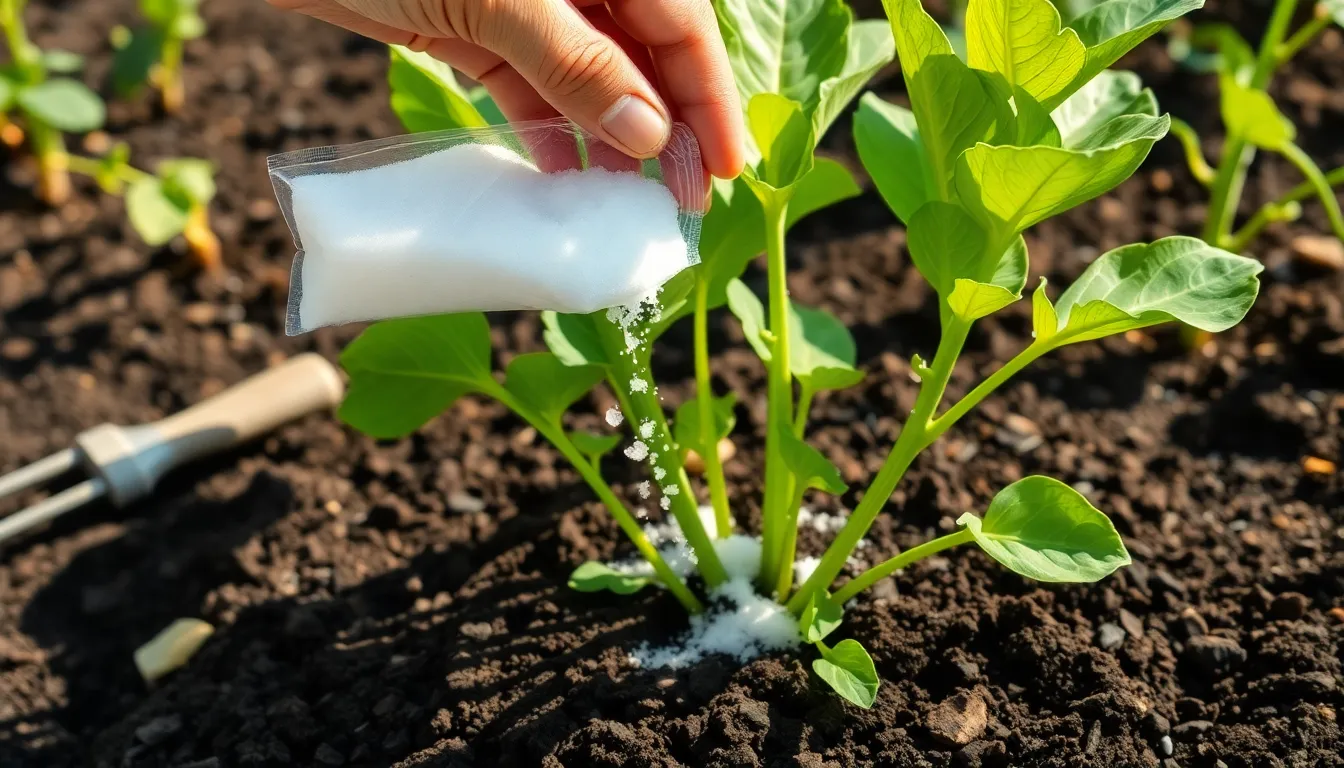
We understand that proper application techniques are crucial for achieving the best results with magnesium sulfate supplementation. Different methods suit various gardening situations and plant types.
Soil Application Methods and Ratios
Direct soil incorporation delivers magnesium and sulfur directly to plant roots where they’re needed most. We recommend working 1 to 2 tablespoons of Epsom salt per foot of plant height into the soil around the root zone. Trees benefit from approximately 2 tablespoons per 9 square feet around their base, applied three times annually.
Timing matters when applying Epsom salt to garden soil. We suggest incorporating it during spring planting or when yellowing leaves with green veins first appear on your plants. Working the granules into the top 4 to 6 inches of soil ensures proper distribution throughout the root zone.
Avoid overapplication since excess magnesium can block calcium absorption in plants. We’ve observed that this interference often worsens blossom end rot in tomatoes and peppers. Always conduct a soil test before applying Epsom salt to prevent nutrient imbalances that could harm rather than help your plants.
Foliar Spray Techniques for Quick Absorption
Dissolving Epsom salt in water creates an effective foliar spray that plants absorb rapidly through their leaves. We recommend mixing 1 tablespoon per gallon of water for most applications. This concentration provides adequate magnesium without risking leaf burn or damage.
Apply during cooler hours such as early morning or late evening to prevent leaf scorch. We’ve found that spraying during hot midday sun can concentrate the solution on leaf surfaces and cause burning. Light misting coverage works better than heavy saturation.
Target exact symptoms when using foliar applications. We only recommend this method when plants show clear signs of magnesium deficiency like interveinal chlorosis. Overuse of foliar sprays can damage leaf tissues and disrupt normal plant functions.
Watering Can Application for Regular Feeding
Dissolving Epsom salt in watering cans provides gentle, consistent delivery of magnesium throughout the growing season. We typically mix the same ratio of 1 tablespoon per gallon for regular feeding applications. This method works exceptionally well for container plants and small garden beds.
Regular feeding schedules help maintain adequate magnesium levels in fast growing plants. We recommend monthly applications during active growing periods for plants that have tested deficient in magnesium. Potted plants often benefit from this approach since their limited soil volume depletes nutrients more quickly.
Monitor plant response after beginning watering can applications. We suggest reducing frequency if leaves begin showing signs of overfertilization or if new growth appears excessive. Remember that Epsom salt supplements existing nutrition rather than replacing complete fertilizer programs.
Timing Your Epsom Salt Applications Throughout the Growing Season
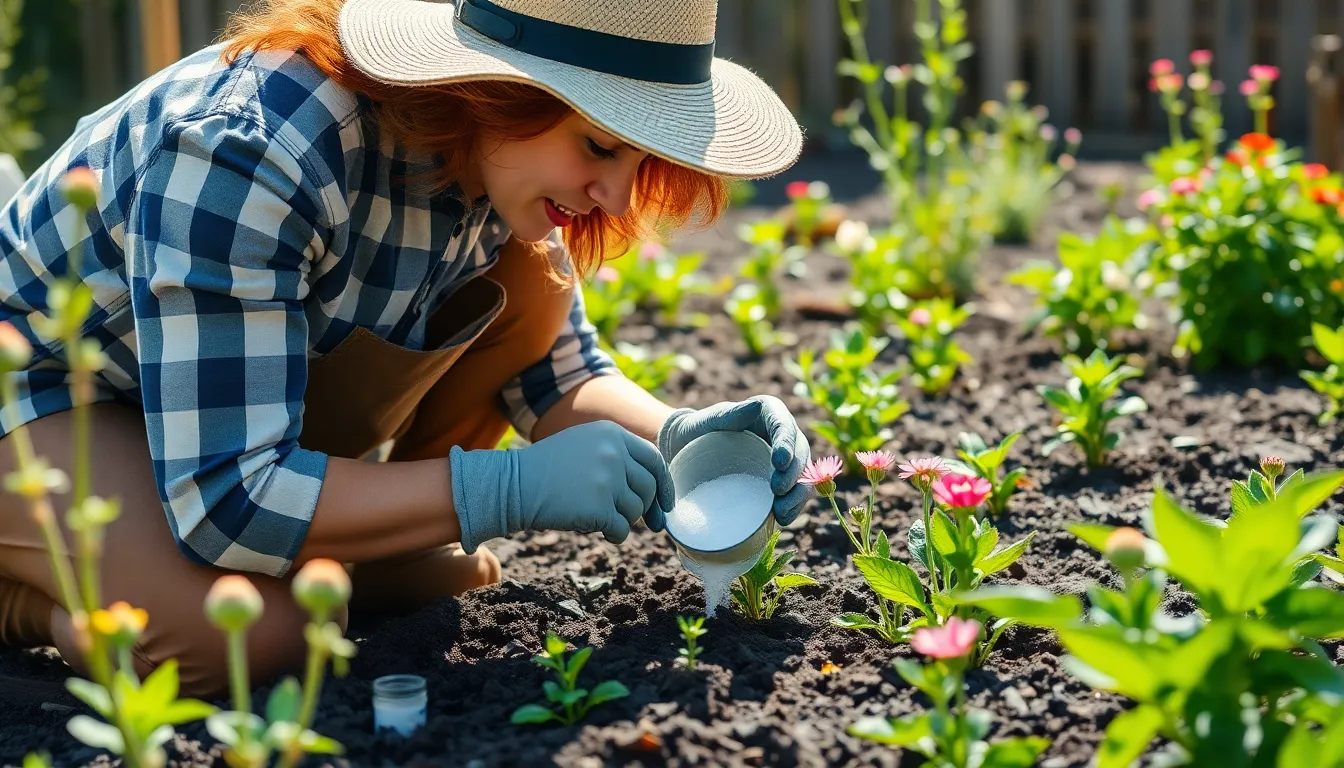
Successful Epsom salt application depends heavily on proper timing throughout the growing season. We’ll maximize plant benefits by understanding when our plants need magnesium most.
Early Spring Pre-Planting Soil Preparation
Soil testing drives our spring Epsom salt applications. We apply Epsom salt to soil before planting only when tests confirm magnesium deficiency, particularly in sandy or acidic soils. Sandy soils drain quickly and lose magnesium faster, while acidic conditions make existing magnesium less available to plants.
Pre-planting application enhances root development from day one. We mix 1 to 2 tablespoons of Epsom salt into the soil around each planting area when deficiency exists. This early intervention improves nutrient absorption and gives plants a strong foundation for the growing season.
Unnecessary spring applications create more problems than answers. We avoid applying Epsom salt without confirmed deficiency because excess magnesium interferes with calcium uptake. This interference can worsen conditions like blossom end rot in tomatoes and peppers later in the season.
Mid-Season Boost During Peak Growing Months
Mid-season symptoms guide our Epsom salt timing decisions. We watch for interveinal chlorosis—yellowing leaves with green veins—during peak growing months from June through August. These visual cues indicate when plants actively need magnesium supplementation.
Foliar applications provide rapid mid-season correction. We mix 1 tablespoon of Epsom salt per gallon of water for foliar sprays when deficiency symptoms appear. Tomatoes treated this way show improved vigor and deeper green color within 7 to 10 days.
Peak growing season applications support fruit production. We apply Epsom salt mid-season to strengthen plant stems and enhance fruit development when magnesium limits growth. But, we exercise caution with foliar sprays to prevent leaf scorch from excessive application.
Fall Applications for Perennial Plant Health
Fall applications prepare perennials for winter dormancy. We consider Epsom salt applications in late September or early October to restore magnesium levels depleted during active growth. This timing helps perennials like roses and flowering shrubs build reserves for winter survival.
Soil testing remains essential for fall applications. We test soil before applying Epsom salt in fall to prevent nutrient imbalances that persist through winter. Excess magnesium applied in fall can create runoff problems and soil chemistry issues that affect spring growth.
Strategic fall timing supports spring regrowth. We apply Epsom salt to established perennials showing deficiency symptoms to support healthier regrowth next spring. This approach works best when combined with other fall garden preparation activities like mulching and pruning.
Measuring Proper Dosages to Avoid Over-Application
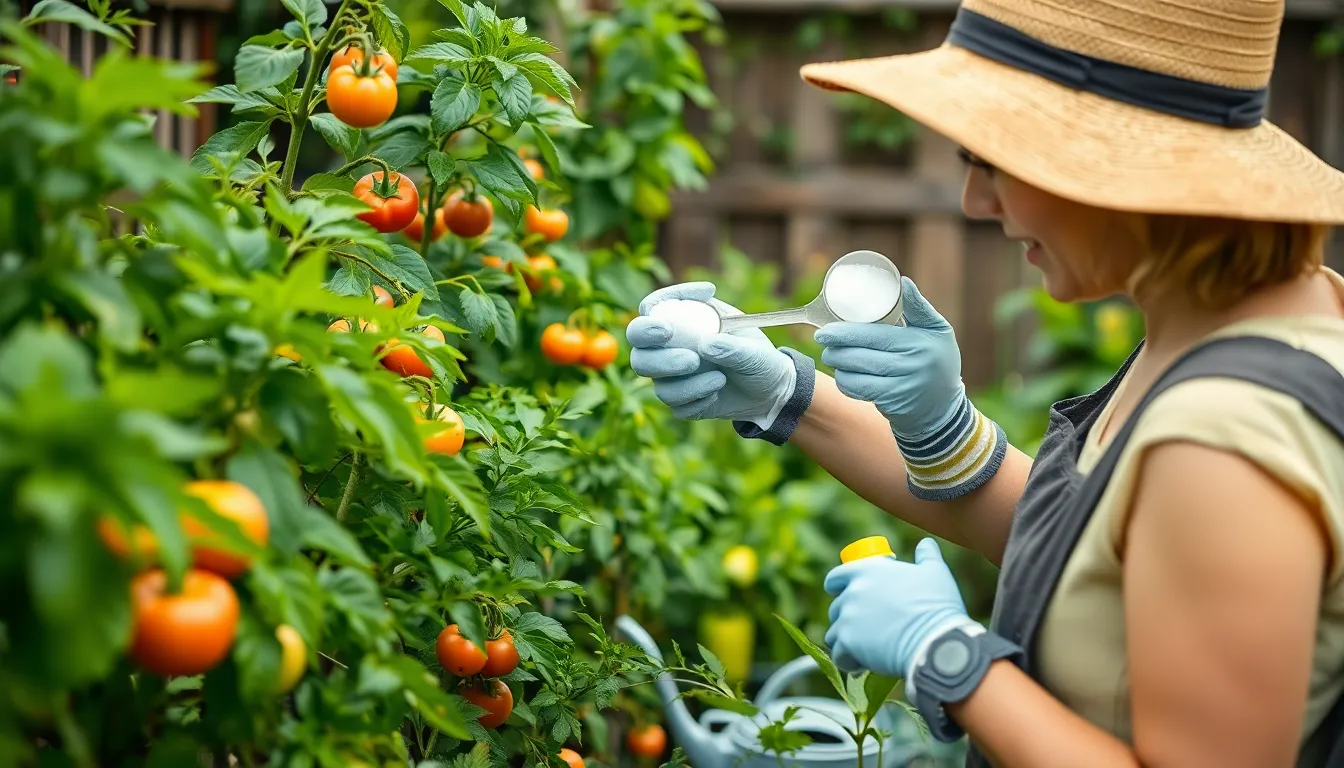
Proper measurement prevents plant stress and nutrient imbalances that can harm your garden’s health. We’ll guide you through exact dosages that maximize benefits while avoiding the common pitfall of over-application.
Recommended Amounts for Vegetable Gardens
Vegetable gardens require careful dosage management to prevent salt buildup in soil. We recommend applying 1 to 2 tablespoons of Epsom salt per gallon of water for tomatoes and other magnesium-hungry vegetables. This dilution rate works effectively as both a soil drench and foliar spray when applied monthly.
Tomato plants specifically benefit from this measured approach since excessive quantities don’t necessarily increase yield even though relieving magnesium deficiency. We’ve found that consistent monthly applications at this rate provide steady nutrient support without overwhelming the plant’s system. Pepper plants respond similarly to this dosage, showing improved foliage color and fruit development.
Garden beds can receive up to one cup of Epsom salt per 100 square feet before planting or seeding. Work this amount into the soil during preparation to establish a baseline magnesium level. This pre-planting application sets the foundation for healthy growth throughout the season.
Dilution Ratios for Container Plants
Container plants need gentler concentrations due to their confined root systems and limited soil volume. We recommend mixing 1 to 2 teaspoons of Epsom salt per gallon of water for houseplants and potted vegetables. This reduced concentration prevents salt accumulation that can damage sensitive container plant roots.
Monthly applications work best for most container plants using this dilution ratio. Foliar application provides quick uptake for immediate deficiency correction, while soil drenching offers steady nutrient release over time. We prefer foliar sprays for plants showing acute deficiency symptoms since absorption happens within hours rather than days.
Houseplants particularly benefit from this conservative approach since their limited soil can’t buffer excess salts like garden beds. Monitor container plants closely after application to ensure they respond positively without showing signs of stress or leaf burn.
Frequency Guidelines for Different Plant Types
| Plant Type | Dosage | Dilution Ratio | Frequency | Application Method |
|---|---|---|---|---|
| Vegetable Gardens | 1–2 tablespoons per gallon | 1–2 tbsp/gallon water | Monthly | Foliar spray/soil drench |
| Container Plants | 1–2 teaspoons per gallon | 1–2 tsp/gallon water | Monthly | Foliar spray/soil drench |
| Roses | ½ cup around base (soil) | 2 tbsp/gallon (foliar) | Monthly, plus planting | Soil incorporation + foliar |
| Shrubs | 2 tbsp/gallon | 2 tbsp/gallon water | Monthly | Foliar spray/soil drench |
| Trees | 2 tbsp/gallon | 2 tbsp/gallon water | 3 times/year | Soil drench |
Most plants thrive with monthly Epsom salt treatments using 2 tablespoons per gallon of water. We space applications four weeks apart to allow plants time to absorb and use the magnesium without overwhelming their systems. This schedule prevents nutrient buildup while maintaining consistent support.
Roses require special attention with half a cup incorporated around the base during planting, followed by foliar sprays in spring and after blooming periods. Shrubs like azaleas and rhododendrons respond well to monthly treatments throughout their active growing season. Trees need less frequent applications, receiving treatments just three times per year due to their extensive root systems and slower nutrient uptake rates.
Spot testing new plants before widespread application helps us gauge individual plant sensitivity. Start with half strength answers and monitor plant response for one week before proceeding with full dosage recommendations.
Combining Epsom Salt With Other Fertilizers and Amendments
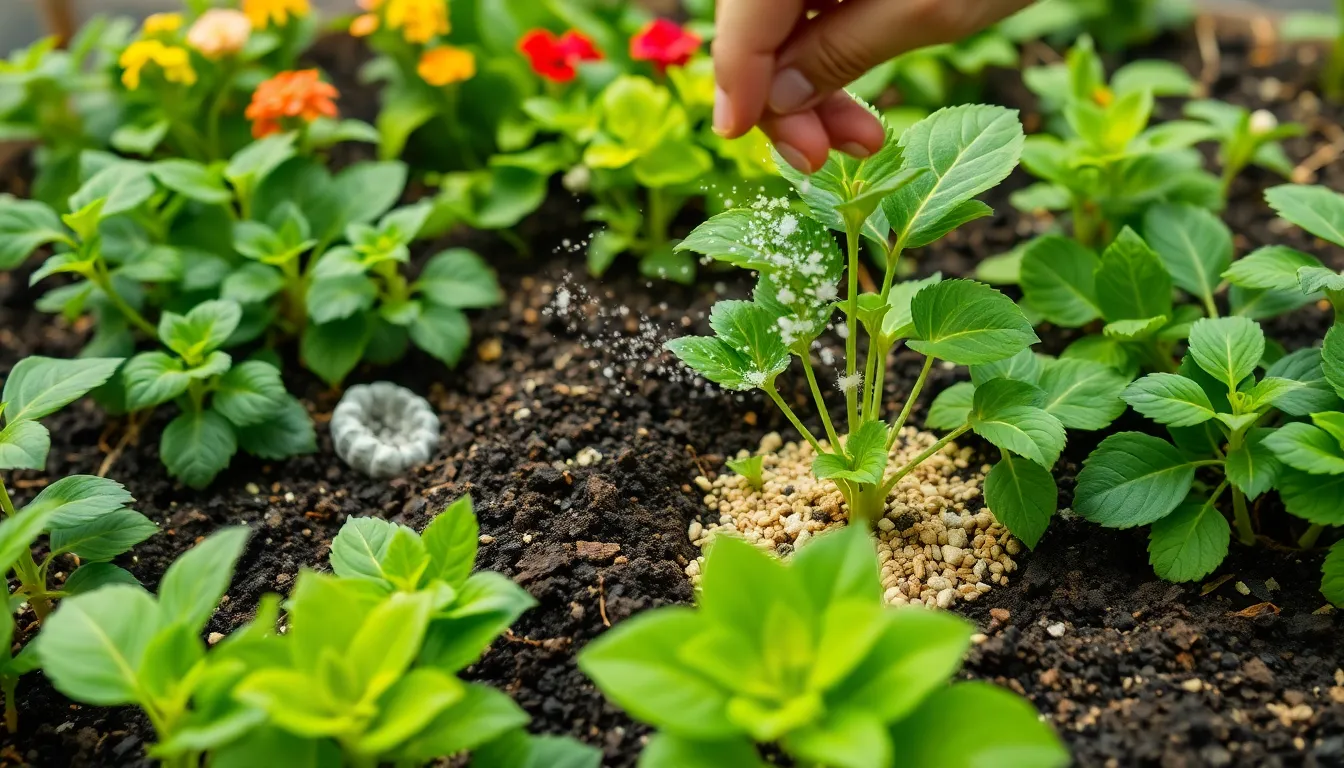
We can maximize our garden’s potential by thoughtfully combining Epsom salt with other fertilizers and soil amendments. Strategic pairing of nutrients creates synergistic effects that enhance plant growth while preventing costly nutrient imbalances.
Compatible Organic Fertilizer Combinations
Organic fertilizers pair exceptionally well with Epsom salt when magnesium deficiency exists in our soil. Compost and well-aged manure complement Epsom salt applications by providing essential nitrogen, phosphorus, and potassium while the magnesium sulfate enhances nutrient uptake throughout the plant. We’ve found that plants receiving this combination show improved pest resistance and healthier overall growth patterns.
Bone meal and kelp meal work harmoniously with Epsom salt applications since they don’t contain excessive magnesium or calcium that could create nutrient competition. Fish emulsion fertilizers also blend effectively with Epsom salt treatments, creating a balanced feeding program that supports vigorous plant development. We recommend combining these organic amendments only after soil testing confirms magnesium deficiency to avoid unnecessary nutrient additions.
Avoiding Chemical Interactions With Synthetic Fertilizers
Synthetic fertilizers high in calcium can create problematic interactions when combined with Epsom salt applications. Excess magnesium from Epsom salt may inhibit calcium uptake in our plants, potentially worsening disorders like blossom end rot in tomatoes and peppers rather than solving them. We must avoid this combination unless our soil tests specifically show both magnesium deficiency and adequate calcium levels.
Chemical fertilizers containing high magnesium concentrations should never be mixed with additional Epsom salt applications. This double dosing creates mineral runoff that can contaminate local water sources and harm beneficial soil microorganisms. We’ve observed that overapplication of Epsom salt foliar sprays can cause leaf scorch, particularly when combined with synthetic nitrogen fertilizers that increase salt sensitivity.
Creating Balanced Nutrient Programs
Balanced nutrient programs start with comprehensive soil testing to determine our garden’s exact magnesium needs. We incorporate Epsom salt into our fertilization schedule only when tests reveal magnesium deficiency, ensuring we address actual plant needs rather than perceived problems. This targeted approach prevents unnecessary expenses and potential plant stress from nutrient imbalances.
Our successful nutrient programs consider the relationships between magnesium, calcium, and other macronutrients to maintain optimal plant health. We monitor total nutrient levels throughout the growing season, adjusting our Epsom salt applications based on plant response and ongoing soil conditions. Expert guidance helps us create customized feeding schedules that support consistent growth without creating antagonistic effects between competing nutrients.
| Nutrient Combination | Compatibility | Application Timing |
|---|---|---|
| Epsom Salt + Compost | Excellent | Spring/Fall |
| Epsom Salt + High-Calcium Fertilizer | Poor | Avoid unless deficient |
| Epsom Salt + Bone Meal | Good | Early season |
| Epsom Salt + Synthetic NPK | Moderate | Monitor closely |
Monitoring Plant Response and Adjusting Treatment Plans
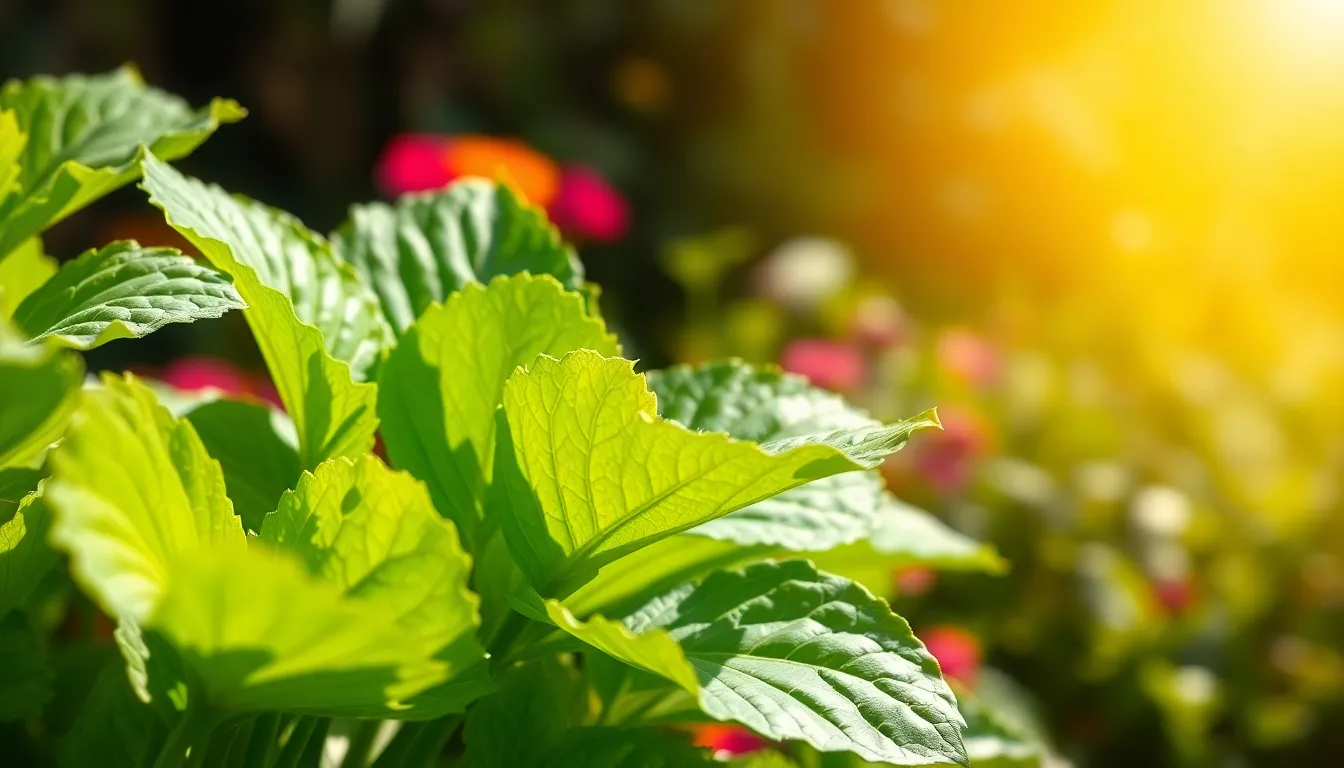
Tracking how our plants respond to Epsom salt applications helps us determine whether we’re achieving the desired results. Careful observation allows us to make informed adjustments that optimize plant health while preventing overuse.
Signs of Successful Epsom Salt Treatment
Improvement in leaf color serves as the most reliable indicator of successful magnesium deficiency correction. Plants that previously showed chlorosis (yellowing between leaf veins) begin displaying healthier, greener foliage within 2-4 weeks of proper application.
Enhanced nutrient uptake becomes evident through stronger stems and more robust root development throughout the growing season. We’ll notice that plants free of magnesium deficiency demonstrate better ability to absorb phosphorus and nitrogen, creating a cascading effect of improved overall health.
Healthier plants naturally exhibit increased resistance to certain pests, which connects indirectly to correcting the underlying magnesium deficiency. This improved pest resistance often surprises gardeners who applied Epsom salt solely for nutrient purposes.
Chlorophyll production increases dramatically once magnesium levels stabilize, leading to more efficient photosynthesis and sustained plant vigor. The visual transformation from pale, struggling plants to vibrant, thriving specimens typically occurs within one growing cycle.
Recognizing When to Reduce Applications
Plants showing no signs of magnesium deficiency paired with soil tests reflecting sufficient magnesium levels indicate that further applications can become harmful. We must remember that excess magnesium blocks calcium uptake, potentially creating new problems while attempting to solve nonexistent ones.
Blossom end rot in tomatoes and peppers often worsens when we continue Epsom salt applications even though adequate magnesium levels. This calcium-related disorder serves as a clear warning sign that we’ve disrupted the delicate nutrient balance our plants require.
Leaf scorch from foliar applications signals immediate need to reduce or eliminate Epsom salt treatments. Brown, burned leaf edges indicate we’ve exceeded the plant’s tolerance threshold, requiring us to flush the soil and adjust our approach.
Mineral runoff increases when we overapply Epsom salt, creating environmental concerns beyond plant health issues. Monitoring drainage water helps us identify when we’ve crossed the line from beneficial to excessive application rates.
| Warning Signs | Recommended Action |
|---|---|
| No growth improvement after 6 weeks | Cease applications |
| Leaf scorch from foliar spray | Reduce concentration by 50% |
| Soil test shows excess magnesium | Stop applications for full season |
| Increased blossom end rot | Test calcium levels immediately |
Long-Term Plant Health Improvements
Correcting magnesium deficiency creates sustained improvements in chlorophyll production, establishing a foundation for long-term plant vitality. Plants with adequate magnesium levels maintain consistent photosynthetic efficiency throughout multiple growing seasons.
Balanced magnesium and sulfur levels contribute to better overall nutrient uptake, promoting strong growth patterns and reliable flowering cycles. We observe that properly nourished plants develop deeper root systems that support them through environmental stresses.
Prevention of pest susceptibility linked to nutrient stress becomes a important long-term benefit of appropriate Epsom salt use. Plants with balanced nutrition naturally resist many common garden pests that target stressed or weakened specimens.
But, we must acknowledge that Epsom salt isn’t a universal solution—its benefits remain situational and depend entirely on pre-existing soil nutrient status. Regular soil testing every 2-3 years ensures we maintain the proper perspective on when and how much to apply for sustained plant health.
Understanding Potential Risks and Limitations of Epsom Salt Use
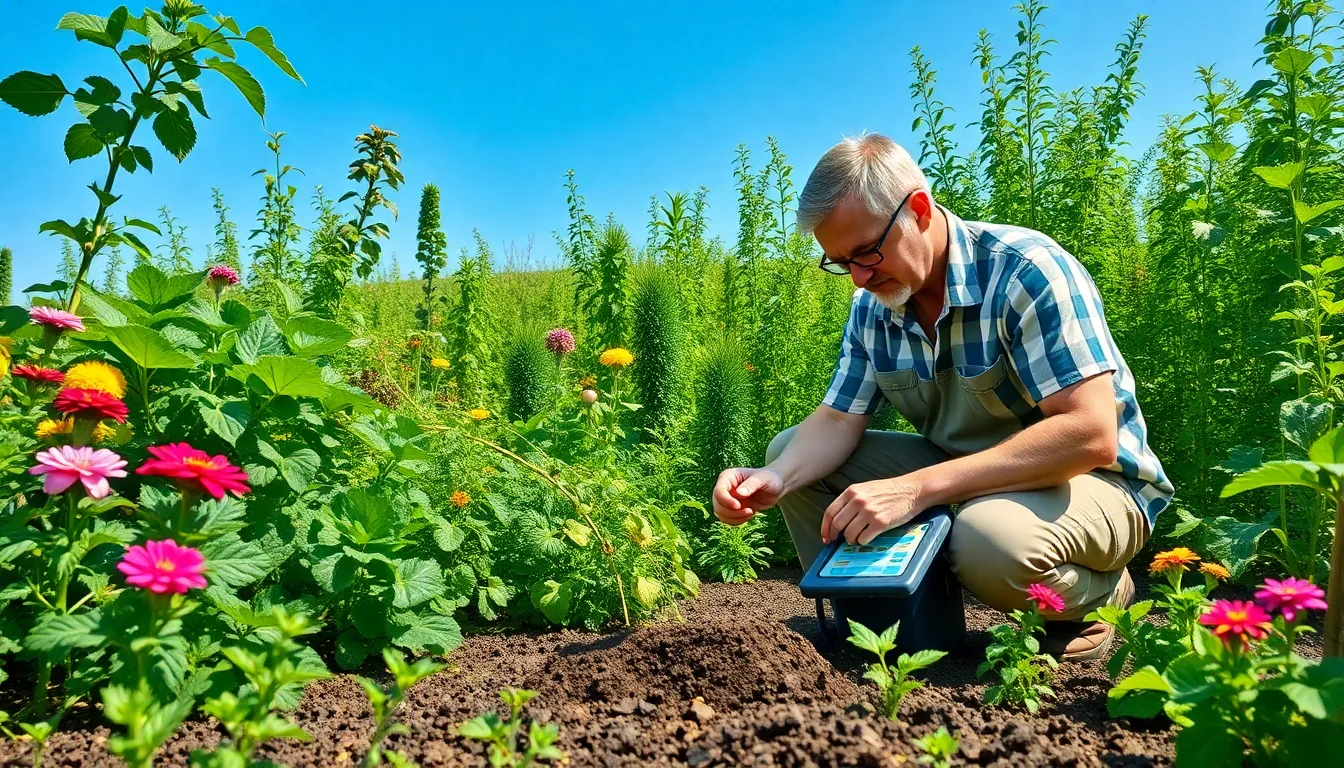
While we’ve explored the benefits of Epsom salt applications, we must acknowledge that improper use can create important problems for our plants and soil. Understanding these risks helps us make informed decisions about when and how to apply this garden supplement.
Soil pH Considerations and Testing
Epsom salt initially maintains a neutral pH and doesn’t drastically alter soil acidity when first applied. Regular applications over time can cause sulfate accumulation in our soil, which gradually acidifies the growing medium and affects nutrient availability.
Most plants thrive when soil pH remains between 6 and 7.5, but continuous Epsom salt use may reduce pH below this optimal range. Acidified soil limits the availability of essential nutrients like nitrogen, phosphorus, and potassium while disrupting the microbial activity that’s crucial for nutrient cycling.
We need to conduct regular soil testing to monitor both pH levels and nutrient concentrations throughout the growing season. Testing every 6 months allows us to catch pH changes early and adjust our application schedules accordingly. Professional soil tests provide the most accurate readings, though home testing kits can offer basic monitoring between professional assessments.
Plants That May Not Benefit From Epsom Salt
Ornamental plants often have lower tolerance for concentrated magnesium applications compared to vegetable crops. Many flowering shrubs, decorative grasses, and bedding plants can suffer from nutrient imbalances when we apply Epsom salt without confirming magnesium deficiency.
Insectivorous plants like pitcher plants, Venus flytraps, and sundews should never receive Epsom salt treatments. These specialized plants have adapted to nutrient poor environments and can be seriously harmed by additional mineral supplements.
Certain vegetables and herbs that prefer alkaline conditions may not respond well to repeated Epsom salt applications. Plants like lavender, rosemary, and members of the brassica family often perform better with balanced fertilizers rather than targeted magnesium supplements.
Environmental Impact and Sustainable Practices
Overusing Epsom salt creates nutrient imbalances that extend beyond our individual gardens into the broader network. Excess magnesium and sulfate can leach into groundwater or run off into nearby water sources, potentially affecting aquatic plant life and soil organisms.
Soil fertility depends on beneficial microorganisms that can be disrupted by concentrated mineral applications. We risk harming these vital organisms when we apply Epsom salt without proper soil testing or exceed recommended dosages.
Sustainable practices require us to confirm magnesium deficiency through soil or tissue tests before beginning any treatment program. Following recommended dosages based on actual plant needs rather than general guidelines helps us avoid environmental harm while achieving better results.
We should monitor soil health regularly and adjust our approach based on test results rather than applying Epsom salt as a routine garden practice. This targeted approach maximizes benefits for our plants while minimizing negative impacts on soil ecosystems and surrounding environments.
Conclusion
We’ve explored how Epsom salt can transform your garden when used strategically and responsibly. This affordable magnesium sulfate solution offers real benefits for plants showing deficiency symptoms but requires careful application and monitoring.
Success lies in understanding your plants’ exact needs rather than applying Epsom salt universally. Regular soil testing remains your best tool for making informed decisions about when and how much to use.
Remember that sustainable gardening practices protect both your plants and the environment. By targeting applications to deficient plants and avoiding overuse we can harness Epsom salt’s benefits while maintaining healthy soil ecosystems for years to come.
Frequently Asked Questions
What is Epsom salt and how does it benefit plants?
Epsom salt is magnesium sulfate, a natural mineral compound that provides essential magnesium and sulfur to plants. It helps improve chlorophyll production, enhances nutrient absorption, and supports overall plant health. Unlike regular table salt, Epsom salt is safe for plants and can address magnesium deficiency symptoms like yellowing leaves.
Which plants benefit most from Epsom salt applications?
Tomatoes, peppers, rose bushes, and houseplants benefit most from Epsom salt. These plants are particularly susceptible to magnesium deficiency and show noticeable improvements in growth and health when treated. Focus applications on plants displaying deficiency symptoms rather than applying universally to all garden plants.
How can I identify magnesium deficiency in my plants?
Look for interveinal chlorosis – yellowing between leaf veins while veins remain green. This symptom typically appears on older leaves first. Other signs include stunted growth, poor fruit development, and overall declining plant vigor. Early identification is crucial to prevent permanent damage to your plants.
How much Epsom salt should I use and when?
Use 1-2 tablespoons per gallon of water for foliar spray or soil application. Apply during the growing season when deficiency symptoms appear. Start with lower concentrations and increase if needed. Always measure carefully to avoid over-application, which can cause nutrient imbalances and plant stress.
Can I use Epsom salt with other fertilizers?
Yes, Epsom salt can be combined with other fertilizers to provide comprehensive plant nutrition. It complements nitrogen-phosphorus-potassium fertilizers by adding essential magnesium and sulfur. However, monitor plant responses and soil conditions to prevent nutrient imbalances from excessive applications of multiple amendments.
What are the risks of overusing Epsom salt?
Overuse can lead to soil acidification, nutrient imbalances, and disruption of beneficial soil microorganisms. Excessive magnesium can interfere with calcium uptake, potentially causing blossom end rot. Some plants may experience leaf scorch or reduced flowering. Always conduct soil tests before application.
Should I test my soil before using Epsom salt?
Yes, soil testing is essential to confirm magnesium deficiency and monitor pH levels. Regular testing helps prevent over-application and ensures optimal nutrient balance. Test both before initial application and periodically during the growing season to track changes in soil chemistry and plant health.
Are there plants that shouldn’t receive Epsom salt?
Ornamental species and insectivorous plants may not benefit from Epsom salt applications. Plants that prefer acidic conditions or those already receiving adequate magnesium should be avoided. Always research specific plant requirements and observe individual plant responses before continuing treatments.
How long does it take to see results from Epsom salt application?
Results typically appear within 2-4 weeks of application. Look for improved leaf color, reduced yellowing, and enhanced overall plant vigor. Monitor plants closely during this period and discontinue applications once magnesium levels are sufficient to prevent over-treatment and potential plant damage.

